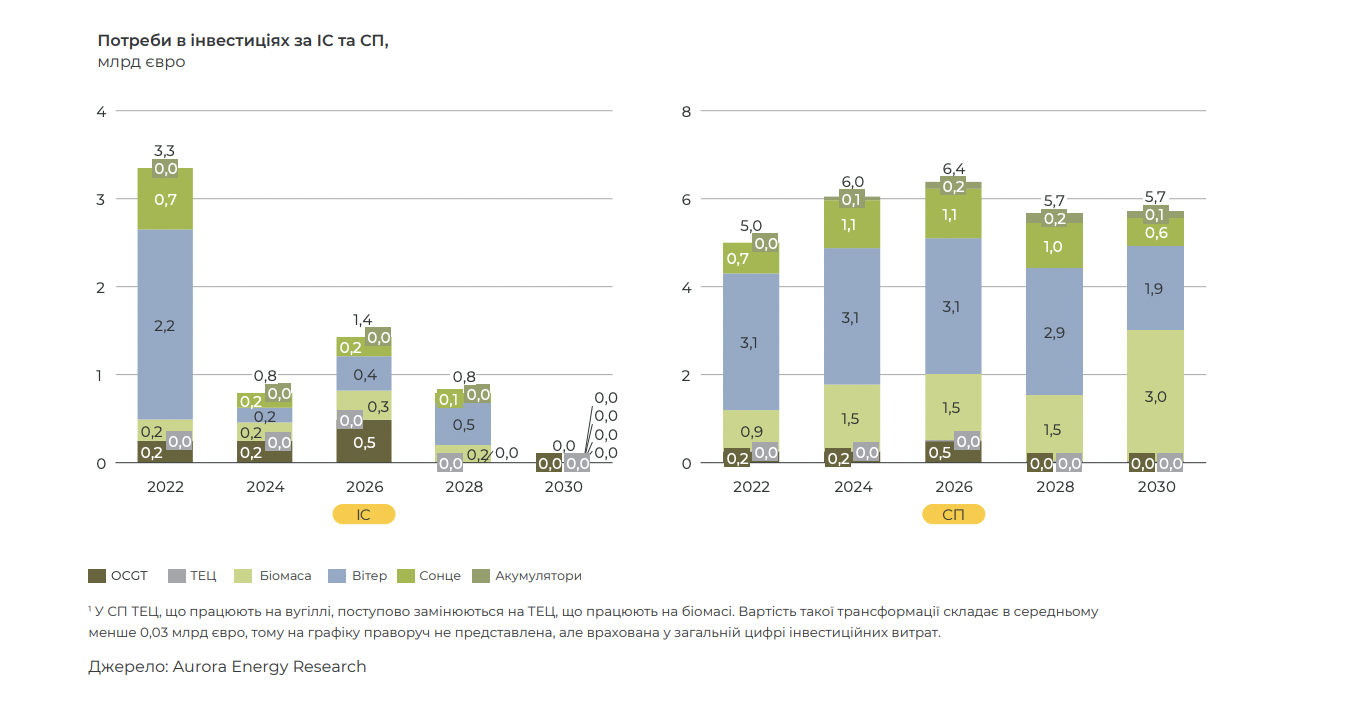Ukraine's existing coal industry will accumulate losses of more than a billion euros over the next decade, and phasing out the use of coal could reduce the burden on the state budget.
It will also create jobs in the field of renewable energy, according to the study of Economic consequences of phasing out the use of coal in Ukraine by 2030, reports Heinrich Böll Stiftung.
The coal sector has been an integral part of the Ukrainian electricity system for decades. But infrastructure and plants are approaching the end of their technical lifetime, and investments in the electricity sector are necessary, independent of the future composition of the power sector.
The article noted that phasing out the use of coal is technically feasible and creates economic opportunities, reducing the need for subsidies to support the coal industry.
Outdated, centralized generation is being replaced by decentralized and environmentally friendly energy sources that work more flexibly. As in many other countries, the Ukrainian energy sector needs modernization.
In Ukraine, with available technologies, there is sufficient potential to meet the demand for electricity at any time.
The researchers simulated a transition scenario (TS), which provides for the linear closure of all 17 GW of coal-fired power in Ukraine in the period 2021–2030. In parallel, the installed power generation capacity from renewable sources under this scenario almost triples and reaches 35 GW of wind, solar, hydro, and bioenergy capacity by 2030. Other capacities, in particular nuclear generation, remain unchanged.
The study demonstrates that it is possible to guarantee the security of electricity supply under the condition of gradual abandonment of the use of coal. Hourly modeling of electricity production shows that RES may occupy an increasingly large share of electricity production.

The structure of electricity generation according to AS (another scenario) and TS.
In the transition scenario, coal-fired power generation declines from 28% (or 40 TWh) to less than 20 TWh in the mid-2020s and phase out in 2030, with RES taking an increasing share of the electricity mix . In 2030, they will produce more than 83 TWh, providing more than half of electricity generation.
The production of electricity at wind stations accounts for the largest share of electricity generation from all renewable energy sources. From 3.3 TWh in 2020, such production increases to 29 TWh in 2026 and to 42 TWh in 2030, which is 25% of all generation.
Photovoltaic electricity generation almost triples its share, from 4% to 11% in 2030. This corresponds to an increase of more than 12 TWh, from 6.2 TWh in 2020 to 18.6 TWh in 2030.
By 2030, biomass will generate almost 14 TWh of electricity, an increase from 1 TWh in 2020 to about 7 TWh in the middle of the decade.
“In the transition scenario, we also see gas capacity being used to a much greater extent to provide the necessary flexibility. In total, in 2030, gas power plants will produce almost 9 TWh. Existing combined-cycle gas turbines (CCGTs) are replacing coal-fired generation during semi-peak load, and new open-cycle gas turbines (OCGTs) are being added to the system,” the study noted.
Thus, the main challenge for the Ukrainian electricity system is flexibility, not a lack of renewable capacity.
State coal mines record losses in the amount of €230 per ton of mined coal. Closing these mines would reduce government spending by 35%, even after decommissioning costs and worker compensation are taken into account.
About 55,000 jobs will be lost in the mining and electricity industries. However, the energy transition opens up the opportunity to create up to 160,000 new jobs.
In Ukraine, for example, it is possible to manufacture equipment for photovoltaic, wind and biomass power generation plants.
The study noted that the transition scenario would provide 50% higher tax revenues over the next 10 years.
In any case, Ukraine needs new investments in the electricity sector in the medium term due to its aging nature, and an accelerated energy transition can contribute to this goal. Additional investment has the potential to create jobs and stimulate economic growth.

Investment needs for AS and TS
The need for investments in the electricity sector of Ukraine opens a window of opportunity for decarbonization of the energy sector, stimulation of economic growth and creation of new jobs.
The article noted that there are six key policy areas that need to be considered to make the energy transition possible.
- What should be the decarbonized energy sector of Ukraine? How can generation flexibility be ensured?
- How can investments in renewable energy sources and increasing the flexibility of the electricity system be attracted?
- What is the political component of the energy transition economy? Who are the key actors in the process that can facilitate and accelerate the energy transition?
- What processes can facilitate and accelerate the energy transition? What formats (eg expert panels, stakeholder consultations, etc.) are needed for this transition?
- How can a just transformation be ensured? How can fossil fuel-dependent regions and affected workers be best supported? How can vulnerable households be protected from rising electricity prices?
- What industrial policy can complement the energy transition? Which existing sectors will be negatively affected by the transition process and which may need support, and which industries can be attracted and developed in the future?
Earlier, EcoPolitic worte, that the financial problems of the renewable energy industry in Ukraine, which arose due to the war, can be partially solved by sale of "clean" electricity to the EU.
As previously reported by EcoPolitics, Germany, Austria, France and the Netherlands announced plans to increase in coal generation, if russia stops supplying gas, that will create 30 million tons of additional CO2 emissions in 2023.





